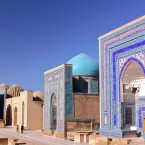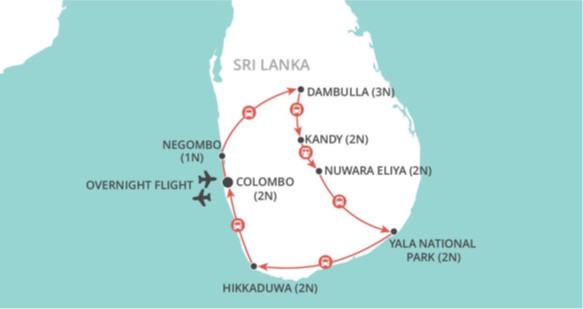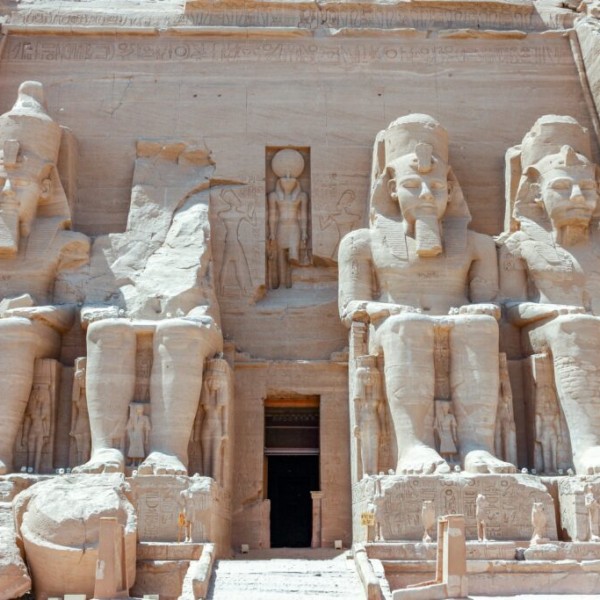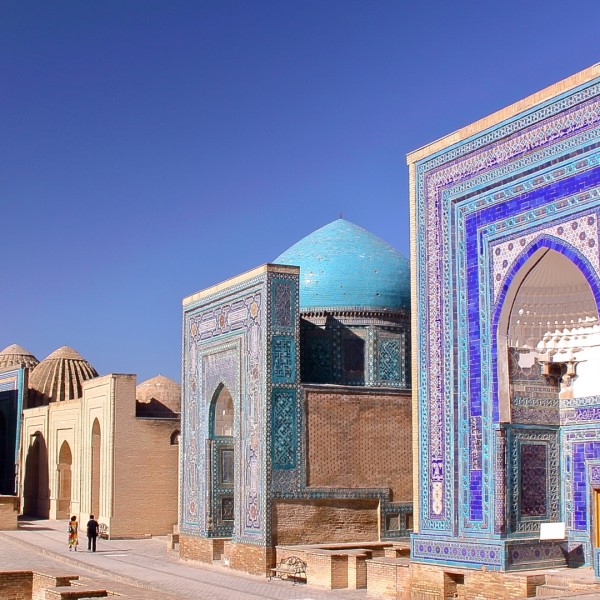Northern Japan is a truly first-class destination for those with a taste for natural beauty, legendary hospitality and the subtlety of Japanese culture. We will visit the famous World Heritage shrines and temples of Nikko, explore the unique culture and history of Sado Island in the Sea of Japan and cruise pine-covered islands in Matsushima Bay. We visit the old castle town of Hirosaki, enjoy the lively atmosphere of the young city of Sapporo in Hokkaido. Along the way we’ll have plenty of time to soak in natural hot springs, sample an amazing array of fresh local foods and learn more about Japanese culture, history and heritage. No trip to Japan is complete without a visit to Mount Fuji,and so we end our journey with a visit to the beautiful Five Lakes region to view this iconic snow capped peak. Mention to the residents of Japan’s southern cities that you are going to visit the northern country and watch their eyes glimmer with envy!
Trip highlights
- Explore old and modern neighbourhoods of Tokyo
- Visit the old castle town of Hirosaki and the first Western-style fortress in Hakodate
- Cruise secluded Matsushima Bay, one of Japan’s top three scenic spots
- Explore UNESCO World Heritage shrines and temples of Nikko
- Discover the unique culture and history of Sado Island
- Walk ancient secluded forest and mountain trails
- Discover the heritage of foreign and Japanese explorers who opened the Hokkaido frontier
- Soak in the lively atmosphere of the young city of Sapporo
- Marvel at the famous peak of Mount Fuji
- Soak in hot spring baths
Itinerary
Day 1 Join in Tokyo
On arrival into either of Tokyo’s two international airports, make your way through immigration and customs and then transfer to our hotel in the city (transfer arrangements will be advised in your pre-departure information). Before Tokyo became the bustling metropolis it is today, it was once a languid fishing village called Edo. Although Tokyo is now a world-class city and home to millions of people, it’s still surprisingly easy here to stumble across unexpected traces of old Edo. Tonight following our group meeting at 6pm, we head out to an optional dinner together at a local restaurant, and then enjoy an evening walking tour of the backstreets of Tokyo. Note: do not validate your Rail Pass today. It is to be used from day 3. Overnight: Ueno Hotel Parkside or similar (Western rooms)
Day 2 Kamakura day trip
This morning has us on an express train out to the seaside village of Kamakura. The capital of Japan for a brief period in the 13th century, Kamakura is now a beachside town known for its impressive temples and beautiful scenery. We’ll enjoy a walking tour around the Kamakura area, including a visit to the famous Kamakura Big Buddha and to Hase Temple. Depending on the group’s interest, it is possible to do an optional 2 hour hike through the foothills from Kita-Kamakura. Overnight: Ueno Hotel Parkside or similar (Western rooms)
Day 3 Sightseeing in Tokyo, train to Nikko
We’ll make an early start today to visit some of the highlights of Tokyo. Using Japan’s renowned public transportation system, your leader will guide you around this busy city until mid-afternoon. Areas visited will depend on the group’s interest but might include either Tsukiji Fish Market or the Asakusa downtown area, and the Harajuku area with young people’s Takeshita Dori and the Meiji Shingu Shrine. If you prefer, it is also possible to explore Tokyo by yourself on this day. In the late afternoon we’ll experience our first bullet train trip, heading north from Tokyo to the peaceful temple town of Nikko (2hrs).The quiet cedar forests and World Heritage shrines and temples here are a relaxing end to an exciting busy day’s exploration. Overnight: Turtle Inn or similar (Japanese futon rooms)
Day 4 Shrines & Temples in Nikko
Our morning will be spent visiting the fascinating World Heritage shrines and temples in Nikko. Built by the great shogun Tokugawa Leyasu’s grandson to commemorate his grandfather’s accomplishments, Nikko has stood the test of time and remains a breathtaking sight. This afternoon is free time with an optional activity to explore Greater Nikko National Park for some world-class hiking or visit some other attractions in the Nikko Town area, such as the Nikko Tamozawa Imperial Villa or the Kanmangafuchi Abyss with its row of Jizo statues. If time remains, check out some of Nikko’s antique shops or watch a calligrapher do some dragon paintings Overnight: Turtle Inn or similar (Japanese futon rooms)
Day 5 Transfer to Sado Island
This morning we catch our train south and then west across the mountains to the port city of Niigata (4.5hrs). From Niigata, we catch a ferry to the rocky coast line of Sado Island (2hrs). This isolated and beautiful island in the Sea of Japan was once a site of banishment for artists, intellectuals and religious figures in feudal Japan. We spend two nights here, exploring the unique history and beautiful temples and fishing villages on Sado. The remainder of today will be spent relaxing and preparing for a gorgeous traditional Japanese dinner at the inn where we are staying. Overnight: Hotel Aokiya or similar (Japanese futon rooms)
Day 6 On Sado Island
We set out exploring Sado Island today. You have the chance to try paddling in traditional boats called tarai-bune in Ogi Town and explore nearby Shugunegi Village, visit the tunnels of Sado Gold Mine and stroll along the seaside at Sengakuwan Cliffs. If time permits, we will also drive along Sado Sky Drive, or visit KODO Village, the home base of Japan’s famous taiko drumming troupe. Dinner tonight again is a veritable feast of fresh seafood and local vegetables at our traditional inn. Overnight: Hotel Aokiya or similar (Japanese futon rooms)
Day 7 Transfer to Sapporo, Hokkaido
We say goodbye to Sado Island and travel by ferry back to Niigata port to catch our flight to Sapporo. The capital of Hokkaido Sapporo is a young, vibrant city with unique architecture and culture. Arriving in the early afternoon, we will go for a short guided city tour (Sapporo Station area, Old Government Building, Odori Street, Susukino, Sapporo’s entertainment district) before heading out to dinner (optional) to enjoy the great food Hokkaido has to offer. Overnight: Hotel Monterey Sapporo or similar (Western rooms)
Day 8 Sights of Sapporo
In 1857, only seven people called Sapporo home. Now, over two million people live here. As the youngest of Japan’s major cities, Sapporo boasts an open, relaxed atmosphere and an indomitable pioneer spirit. Today there are many optional activities to choose from: take time today to learn about the history of Hokkaido and its Ainu native people at the Historic Village of Hokkaido, the city’s open air museum, visit the peaceful city gardens, learn about one of the city’s best-known exports, Sapporo Beer or visit Otaru – a beautifully preserved canal city (40 minute train journey). Your guide will help you find your favourite place to visit and will tell you how to get there by yourself. Overnight: Hotel Monterey Sapporo or similar (Western rooms)
Day 9 Transfer to Hakodate
We have a free morning to relax or further explore Sapporo before catching a train to Hakodate. After a 3 hour train journey through the beautiful Hokkaido countryside we arrive in Hakodate, a vibrant European-influenced city with an interesting history. We learn more about this city and about the turbulent history of 19th century Japan when strolling around the Kanemori Old Brick Warehouses near the Hakodate waterfront and around Motomachi, an area with historic buildings and places connected with foreigners in Hakodate, and finish the day catching the impressive night view of the city from nearby Mount Hakodate. Overnight: Route Inn Hakodate or similar (Western rooms)
Day 10 In Hakodate
We’re up very early this morning to immerse ourselves in Hakodate’s lively morning market. One of the specialty foods on Hokkaido is crab, and the market in Hakodate offers a great chance to gape at the endless selection of crab and other seafood on offer. Then we will travel by Hakodate’s old tram to the remains of Japan’s first western-style fortress, Hakodate Fortress-Goryokaku. There are a number of optional activities for you to pursue in the afternoon. In warmer season we recommend heading out to Lake Onuma Park for some lakeside strolls. For those who want to hike, there are some old fortifications to explore on Mount Hakodate. In colder season, why not learn more about the Ainu, Hokkaido’s indigenous population at the Hokkaido City Museum of Northern Peoples. Alternatively you can travel to nearby Yunokawa Onsen for a soak in relaxing hot spring water, or watch Japanese monkeys enjoy a tip in the hot element at the Hakodate City Tropical Botanical Garden. Overnight: Route Inn Hakodate or similar (Western rooms)
Day 11 Transfer to Hirosaki
After breakfast we catch a train and travel from Hakodate to Hirosaki. The trip from Hakodate to Hirosaki takes 3 hours, and goes through a long undersea tunnel – an impressive feat of engineering. Located in the far northern Aomari prefecture, Hirosaki was once an important cultural centre in Northern Japan. A number of Western-style buildings are witnesses of Hirosaki’s, for example the Former Residence of Foreign Teachers in Hirosaki, Old Hirosaki City Library and the Miniature Buildings etc. The city’s spacious castle park, some well-preserved Samurai houses and Zenringai, an area boosting 33 Zen temples, linger as reminders of its historic significance as castle town. Why not enjoy Hirosaki culinary specialties: apple pies and “samurai coffee”. We will be staying in the traditional ryokan of Ishiba built in 1879, which will take you back to Meiji era. Overnight: Ishiba Ryokan or similar (Japanese futon rooms)
Day 12 Hirosaki
Hirosaki is surrounded by spectacular scenery. Mt Iwaki is visible from Hirosaki city and UNESCO World Heritage Shirakami-Sanchi, the world’s largest remaining beech forest, is only 50 minutes from the city. Today you are free to explore this stunning area. During the warmer season a hike in the Shirakami-Sanchi area is highly recommended. If you prefer soaking in the hot springs rather than hiking in the forest, there are a number of open-air spas outside the city for you to enjoy. Other optional activities that your guide can organise for you are: participation in zazen meditation in the early morning at a Zen Temple, watching a Japanese tea ceremony, or (in autumn) apple picking at one of Hirosaki’s many apple orchards. Overnight: Ishiba Ryokan or similar (Japanese futon rooms)
Day 13 Transfer to Matsushima
Heading south we catch the local express train to Matsushima (4hrs). Located on Tohoku’s Pacific Coast, Matsushima’s famous pine-covered islands are considered one of the “Nihon Sankei”- three great sights of Japan. Upon arrival, we will go for a short stroll along the bay to Godaido temple set on a small island before settling into our seaside hotel for another delicious local gourmet meal and a glass or two of fine Tohoku sake. Overnight: Matsushima Century Hotel or similar (Western rooms)
Day 14 Matsushima Bay Cruise
Following breakfast we enjoy a sightseeing cruise through Matsushima’s famous pine islands. After the cruise, you’re free to explore the island on your own using the well-marked paths. For example, you might want stroll over to Fukuura Island or Oshima Island, or explore the grounds of Zuiganji Temple and its caves, or the garden of Entsuin Temple. For hikers, we suggest a walk up nearby Sokanzan Mountain for a bird’s-eye view of this beautiful area. Overnight: Matsushima Century Hotel or similar (Western rooms)
Day 15 To Mt Fuji
Taking the bullet train we travel to Tokyo, arriving around noon. We then transfer by train to Lake Kawaguchi, at the base of Mt Fuji. No trip to Japan is complete without a visit to the iconic Mount Fuji. Located just two hours west of Tokyo, the Mount Fuji Five Lakes area is a must-see for those interested in both the history and natural beauty of Japan. We will start exploring the area around Lake Kawaguchi, one of the Fuji Five Lakes. It is possible to stroll around the lake, check out some quirky local museums or enjoy a ride up Mount Kachi Kachi Ropeway for a fantastic view of Mount Fuji (weather permitting). Overnight: Route Inn Kawaguchiko or similar (Western rooms)
Day 16 Mt Fuji, return to Tokyo where trip concludes
As the sun rises we hope to catch another glimpse of Japan’s most iconic peak, Mount Fuji. Our morning is spent exploring the ancient Sengen Jinja Shrine and walk along some nature trails at the foot of Mount Fuji. We will return to Tokyo by train where the trip concludes in the late afternoon at around 5.30pm (Kawaguchiko station to Shinjuku station). The tour leader will be happy to help you make arrangements for further travel in Japan or to your next destination.
InclusionS
- 15 breakfasts and 7 dinners
- Comfortable well located hotel/traditional inns
- Japan Rail Pass – for use from day 3
- Internal flight Niigata/Sapporo valued at USD$363
- Sightseeing and entry fees as listed in itinerary
- Expert bilingual guide
- Medical kit
Images courtesy of World Expeditions
WEX – TNR




















